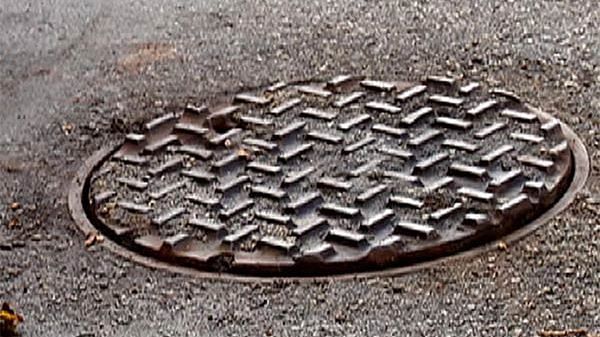Thank you dear subscribers, we are overwhelmed with your response.
Your Turn is a unique section from ThePrint featuring points of view from its subscribers. If you are a subscriber, have a point of view, please send it to us. If not, do subscribe here: https://theprint.in/subscribe/
After spending over four decades in Europe and now resettling in India, one begins to notice the smallest things that reveal the largest truths. Take for example — gutters. Or rather, the lack of visible ones in Germany. Walk through any town — Munich, Düsseldorf, or a sleepy village in the Black Forest — and you won’t find a single open drain flanking the roadside. It’s not that water defies gravity there; it’s that engineering, planning, and civic consciousness work seamlessly beneath the surface.
Contrast this with the Indian urban experience: open gutters lining roads, stagnant water breeding mosquitoes, plastic choking drains, and monsoon downpours turning streets into sewers. What explains this stark contrast?
The answer lies in infrastructure, yes — but also in mindset, governance, and long-term thinking. Germany’s drainage system is an invisible triumph of planning and maintenance. In most cities, rainwater is directed through gentle slopes on roads and pavements toward stormwater inlets — those unobtrusive metal grates at the curb. Beneath them lies a vast underground network of pipes, channels, and holding tanks. No drama. No overflow. No garbage to block the flow. It simply works.
But Germany didn’t get here overnight. Post-war decades saw massive investment in urban renewal and environmental protection. Building codes mandated that every new development integrate water management systems. Roofs were required to channel rainwater through Fallrohre (downpipes) into underground drains or soak pits. Roads were cambered to direct flow. Periodic maintenance was institutionalized. Civic sense was cultivated — not just by threat of fines, but through education and example.
What is even more remarkable is that Germany’s high-tech porous roads can absorb up to four tons of water per square foot per minute. Let that sink in — literally. These permeable pavements reduce surface runoff, recharge groundwater, and prevent flooding — all without a single visible gutter.
Meanwhile, Indian cities have inherited outdated colonial-era drainage, compounded by decades of chaotic growth. Even newly built areas show scant regard for water management. Builders cut corners. Municipalities are underfunded or distracted. Waste segregation is rare. Gutters remain open because underground systems are often dysfunctional or absent. Worse, open drains become dumping grounds for everything from plastic wrappers to household garbage. No wonder a 20-minute downpour can flood entire neighborhoods.
This isn’t just an aesthetic issue. Poor drainage leads to waterlogging, road damage, mosquito-borne diseases, and respiratory ailments. According to the National Institute of Urban Affairs, over 60% of Indian cities have inadequate stormwater systems. Ironically, the same monsoon water that floods our cities in July is desperately missed in March when groundwater tables are depleted.
We are staring at both a flood and drought crisis — simultaneously.
So, what can India learn from Germany’s approach?
- Think Long-Term, Not Election-Term
Drainage isn’t glamorous. It doesn’t win votes. But it defines urban quality of life. Cities must invest in underground infrastructure not for the next five years, but the next fifty.
- Enforce Urban Building Codes
Every new home, shop, or apartment must have a proper rainwater disposal and harvesting system. These should be vetted by engineers before occupancy is granted.
- Transition from Open to Closed Systems
Open drains must be phased out. Pilot closed drainage in new zones. Use local materials and labor, but adopt global best practices.
- Educate Citizens
A gutter is not a dustbin. Waste segregation and public cleanliness must be taught early — and violations penalized regularly, not occasionally.
- Reclaim Traditional Wisdom
Ancient Indian cities like Mohenjo-Daro had covered sewage drains and water channels. Kerala’s padippura homes had in-built rainwater tanks. Let’s blend modern engineering with native intelligence.
Germany is no utopia. It has its share of bureaucracy and budget issues. But when it comes to water — the source of life and civilisation — it shows that discipline and design can avert disaster.
India’s urban sprawl cannot be wished away. But we must stop glorifying chaos as culture. Our clogged, foul-smelling gutters are not signs of vibrant complexity — they’re preventable failures. What Germany hides beneath its streets isn’t just plumbing — it’s a symbol that a society which respects its water, respects its people.
The time has come for India to stop treating infrastructure as a ceremonial ribbon-cutting event and start treating it as civilisation’s backbone.
Our gutters — visible or not — reflect who we are.
Mohan Murti
Advocate & International Industry Arbitrator, Former United Nations Investment Promotion Advisor in Europe; Retired Managing Director – Reliance Industries Europe.
These pieces are being published as they have been received – they have not been edited/fact-checked by ThePrint.


